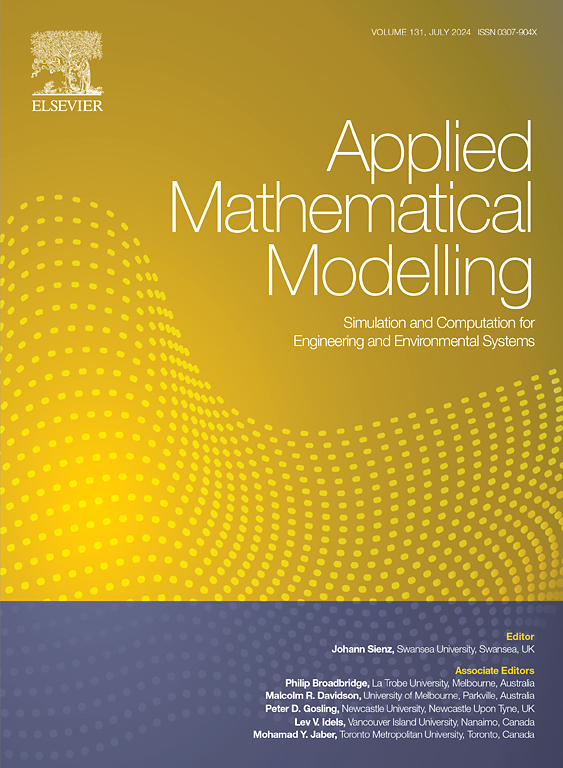On progressive failure of sand considering fabric evolution with micropolar hypoplastic model
IF 4.4
2区 工程技术
Q1 ENGINEERING, MULTIDISCIPLINARY
引用次数: 0
Abstract
To study the progressive failure of sand considering the multi-scale and its fabric evolution, the fabric is used as the quantitative link from micro to macro, then the influence of fabric on the anisotropic critical state is adopted to establish a hypoplastic model, and the fabric evolution and micropolar theory are employed to describe the mesoscopic mechanism of local deformation, finally, the simulations of discrete element methods (DEM) and finite element methods (FEM) is coordinated to reproduce the progressive failure. In the DEM biaxial simulations, the distribution of the contact normal is quantitatively determined by the novel orthotropic fabric tensor, and the difference in particle shapes and sample position showed that the fabric evolution is obvious, especially inside and outside the shear band, and before or after the shear band penetration. The fabric evolution of DEM is implanted into the corresponding location of the FEM sample, the results indicate that the macro-meso incorporation hypoplastic model can effectively describe strain localization evolution and progressive failure. The internal length of micropolar theory and particle size are identified as the main factors influencing the shear band thickness. The anisotropic fabric influences the shear band patterns, with circular and elliptical particles tending to form an "X-shape" shear band, while square and triangular particles tend to form a "L-shape" shear band.
用微波低塑性模型研究砂的渐进破坏(考虑织物演化
为了研究砂的多尺度渐进破坏及其织构演化,将织构作为从微观到宏观的定量联系,然后采用织构对各向异性临界状态的影响建立了低塑性模型,并利用织构演化和微极理论描述了局部变形的中观机制,最后协调离散元法(DEM)和有限元法(FEM)的模拟,再现了渐进破坏的过程。在 DEM 双轴模拟中,接触法线的分布由新颖的正交织物张量定量确定,颗粒形状和样品位置的差异表明织物的演化非常明显,尤其是在剪切带内外和剪切带穿透前后。将 DEM 的织构演化植入有限元试样的相应位置,结果表明宏观-微观融入次塑性模型能有效地描述应变局部演化和渐进破坏。微波理论的内部长度和颗粒大小是影响剪切带厚度的主要因素。各向异性结构影响剪切带形态,圆形和椭圆形颗粒倾向于形成 "X 形 "剪切带,而方形和三角形颗粒倾向于形成 "L 形 "剪切带。
本文章由计算机程序翻译,如有差异,请以英文原文为准。
求助全文
约1分钟内获得全文
求助全文
来源期刊

Applied Mathematical Modelling
数学-工程:综合
CiteScore
9.80
自引率
8.00%
发文量
508
审稿时长
43 days
期刊介绍:
Applied Mathematical Modelling focuses on research related to the mathematical modelling of engineering and environmental processes, manufacturing, and industrial systems. A significant emerging area of research activity involves multiphysics processes, and contributions in this area are particularly encouraged.
This influential publication covers a wide spectrum of subjects including heat transfer, fluid mechanics, CFD, and transport phenomena; solid mechanics and mechanics of metals; electromagnets and MHD; reliability modelling and system optimization; finite volume, finite element, and boundary element procedures; modelling of inventory, industrial, manufacturing and logistics systems for viable decision making; civil engineering systems and structures; mineral and energy resources; relevant software engineering issues associated with CAD and CAE; and materials and metallurgical engineering.
Applied Mathematical Modelling is primarily interested in papers developing increased insights into real-world problems through novel mathematical modelling, novel applications or a combination of these. Papers employing existing numerical techniques must demonstrate sufficient novelty in the solution of practical problems. Papers on fuzzy logic in decision-making or purely financial mathematics are normally not considered. Research on fractional differential equations, bifurcation, and numerical methods needs to include practical examples. Population dynamics must solve realistic scenarios. Papers in the area of logistics and business modelling should demonstrate meaningful managerial insight. Submissions with no real-world application will not be considered.
 求助内容:
求助内容: 应助结果提醒方式:
应助结果提醒方式:


